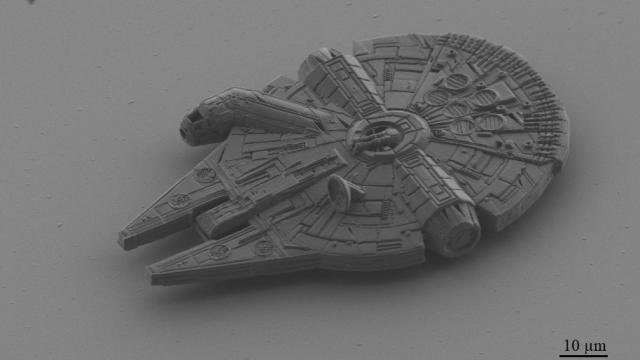Some sculptors work in marble; some in clay; and some in microscopic dots of resin shaped by lasers.
Microlight3D, a company based in Grenoble, France, develops 2D and 3D microprinting systems. To commemorate the release of season two of The Mandalorian, and inspired by Jedi masters who use green lightsabers, the team decided to microprint a Millennium Falcon smaller than a human hair, using green lasers instead of the usual red. They also made a striking, tiny Baby Yoda, which you can see in our normal-sized slideshow.
An Itsy Bitsy Millennium Falcon
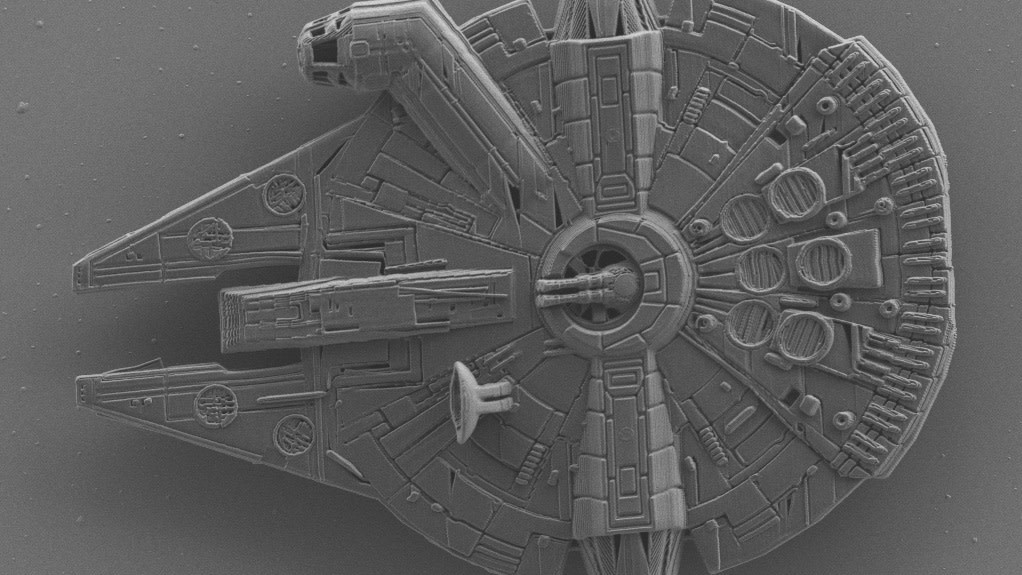
For those unfamiliar with microprinting, it is typically done red lasers with wavelengths between 700 and 800 nanometres. These are called femtosecond lasers, said Philippe Paliard, cofounder at Microlight3D, and they are very big, expensive, and difficult to handle, with maintenance needed regularly. According to Paliard, some scientists believe that these are the only lasers that can be used in 3D microprinting.
Looking at the Falcon, printed by Paliard with green lasers, we now have an example that shows us that 3D microprinting is not limited to red lasers. And in case you had any doubt, Paliard also printed a teeny tiny Baby Yoda (that baby) and some pretty cool itsy bitsy X-wings.
OK, So “Tiny” Is a Hyperbole Here
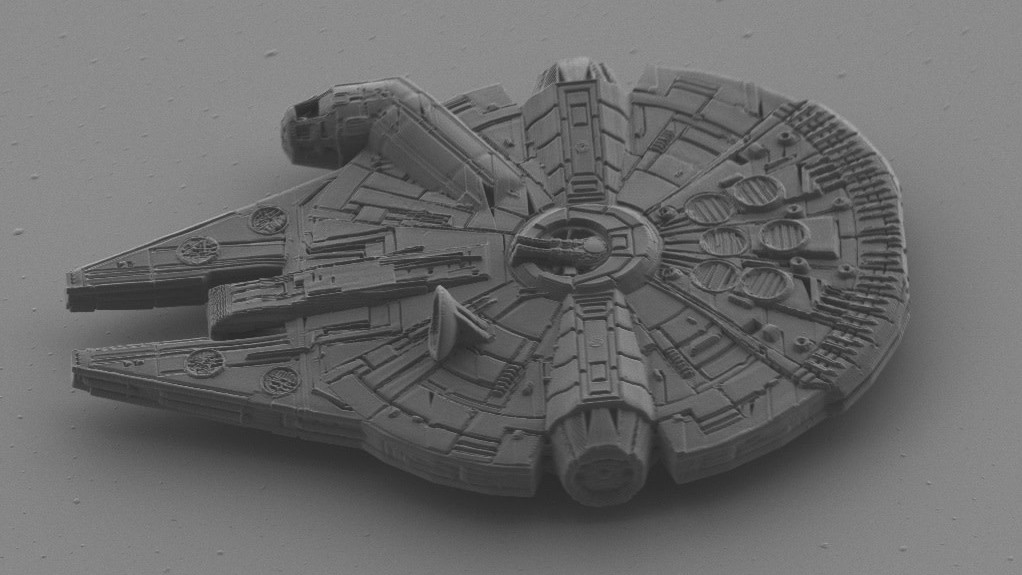
Paliard and his team developed a 3D microprinting system, called the µFAB-3D-Advanced System, that uses green lasers, formally known as compact industrial lasers. These lasers have a shorter wavelength, or 532 nm, and thus print with enhanced resolution, Paliard said. (In 3D microprinting, resolution is directly proportional to wavelength of the laser). The unique system is a product of 15 years of fundamental research at the Université Grenoble Alpes.
In addition, compact industrial lasers are easier to use, reliable, and durable, he said. They last a long time and require no yearly maintenance.
X-Wing Starfighters
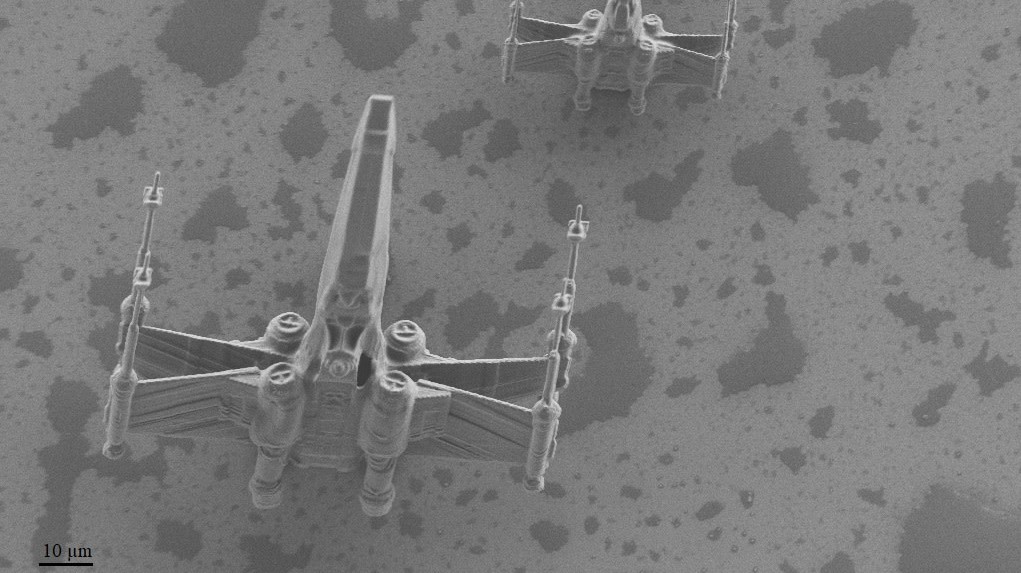
Printing the Falcon took 50 minutes, plus an extra 10 minutes in a solvent bath to remove unpolymerized resin. Paliard printed the Falcon on his first try, and noted that it was 400,000 times smaller than the original. Han Solo, the Falcon’s infamous pilot, would need to be 5 microns tall, or roughly the size of a bacterium, to fit into this ship.
“With this realisation, we show that it is possible to obtain extremely precise and complex microparts with our technology,” Paliard told Gizmodo via email. “By zooming in the cockpit, it is even possible to distinguish the seats on which Han Solo and Chewbacca sit!”
How Do You Take a Picture of Teeny Star Wars Replicas?
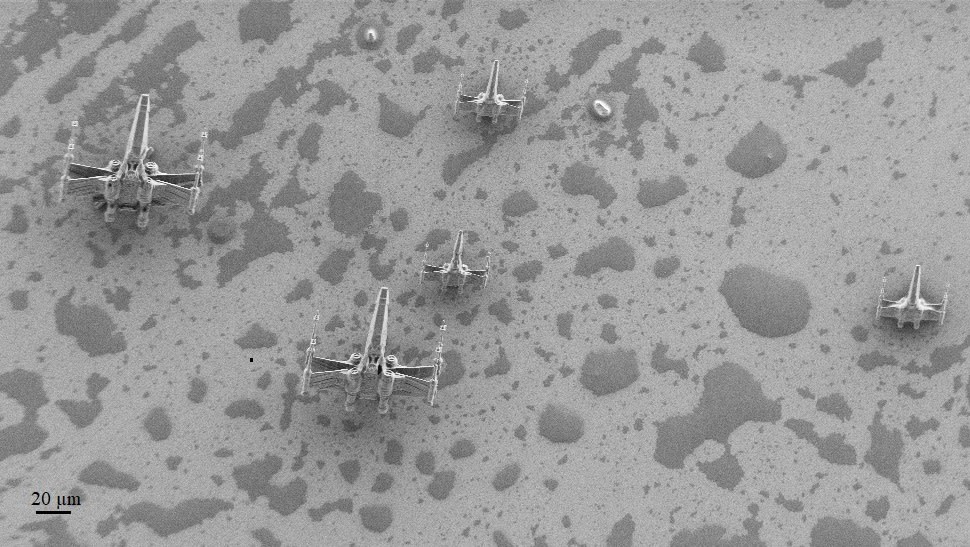
Some of you might be thinking, if these are so small, how on Earth did the team manage to take photos of them? They used a scanning electron microscope, an instrument that scans a focused electron beam over an object to create an image. Paliard explained that to get the Falcon under the electron microscope, they had to fix it to a glass substrate.
The Falcon measures 100 x 70.8 x 23.4 microns. By comparison, the width of a strand of hair is 100 microns.
And Now What You’ve All Been Waiting For: The Baby

Paliard said the biggest challenge was to print these complex replicas with the highest resolution possible. This was especially true for the Falcon, which had a lot of detail. To achieve this, Paliard used Microlight3D’s new “Green-A” phororesist, a resin developed by the company over the past six months. Green-A is created specifically to be shaped by green lasers.
No One Ever Looked Cuter in a Santa Hat
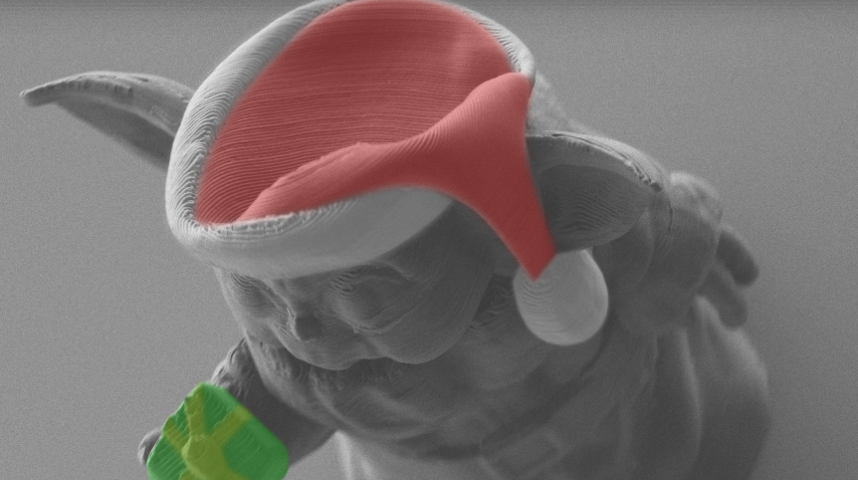
Apart from microrobotics, Paliard said that 3D microprinting has many potential applications. For instance, it can be used to create medical devices, such as micro-needles to administer medicine in a non-invasive way or small stents to treat cardiovascular disease. Some may also consider using it in micro-optics, or very small optics for optical fibre connectors or microlenses for smartphones.
“We see many interests in these very various fields, so we hope that our 3D-microprinting technology will help researchers and [the industry],” he said, “and create breakthrough discoveries in these domains.”
